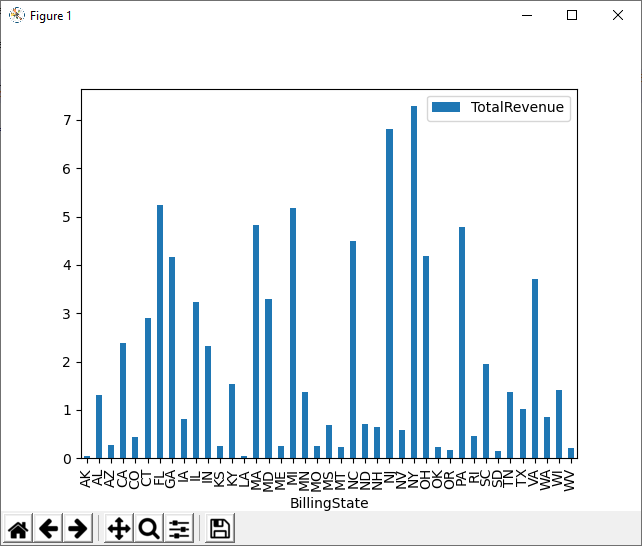Model Context Protocol (MCP) finally gives AI models a way to access the business data needed to make them really useful at work. CData MCP Servers have the depth and performance to make sure AI has access to all of the answers.
Try them now for free →How to Visualize Jira Data in Python with pandas
Use pandas and other modules to analyze and visualize live Jira data in Python.
The rich ecosystem of Python modules lets you get to work quickly and integrate your systems more effectively. With the CData Python Connector for Jira, the pandas & Matplotlib modules, and the SQLAlchemy toolkit, you can build Jira-connected Python applications and scripts for visualizing Jira data. This article shows how to use the pandas, SQLAlchemy, and Matplotlib built-in functions to connect to Jira data, execute queries, and visualize the results.
With built-in optimized data processing, the CData Python Connector offers unmatched performance for interacting with live Jira data in Python. When you issue complex SQL queries from Jira, the driver pushes supported SQL operations, like filters and aggregations, directly to Jira and utilizes the embedded SQL engine to process unsupported operations client-side (often SQL functions and JOIN operations).
About Jira Data Integration
CData simplifies access and integration of live Jira data. Our customers leverage CData connectivity to:
- Gain bi-directional access to their Jira objects like issues, projects, and workflows.
- Use SQL stored procedures to perform functional actions like changing issues status, creating custom fields, download or uploading an attachment, modifying or retrieving time tracking settings, and more.
- Authenticate securely using a variety of methods, including username and password, OAuth, personal access token, API token, Crowd or OKTA SSO, LDAP, and more.
Most users leverage CData solutions to integrate Jira data with their database or data warehouse, whether that's using CData Sync directly or relying on CData's compatibility with platforms like SSIS or Azure Data Factory. Others are looking to get analytics and reporting on live Jira data from preferred analytics tools like Tableau and Power BI.
Learn more about how customers are seamlessly connecting to their Jira data to solve business problems from our blog: Drivers in Focus: Collaboration Tools.
Getting Started
Connecting to Jira Data
Connecting to Jira data looks just like connecting to any relational data source. Create a connection string using the required connection properties. For this article, you will pass the connection string as a parameter to the create_engine function.
To connect to JIRA, provide the User and Password. Additionally, provide the Url; for example, https://yoursitename.atlassian.net.
Follow the procedure below to install the required modules and start accessing Jira through Python objects.
Install Required Modules
Use the pip utility to install the pandas & Matplotlib modules and the SQLAlchemy toolkit:
pip install pandas pip install matplotlib pip install sqlalchemy
Be sure to import the module with the following:
import pandas import matplotlib.pyplot as plt from sqlalchemy import create_engine
Visualize Jira Data in Python
You can now connect with a connection string. Use the create_engine function to create an Engine for working with Jira data.
engine = create_engine("jira:///?User=admin&Password=123abc&Url=https://yoursitename.atlassian.net")
Execute SQL to Jira
Use the read_sql function from pandas to execute any SQL statement and store the resultset in a DataFrame.
df = pandas.read_sql("SELECT Summary, TimeSpent FROM Issues WHERE ReporterDisplayName = 'Bob'", engine)
Visualize Jira Data
With the query results stored in a DataFrame, use the plot function to build a chart to display the Jira data. The show method displays the chart in a new window.
df.plot(kind="bar", x="Summary", y="TimeSpent") plt.show()

Free Trial & More Information
Download a free, 30-day trial of the CData Python Connector for Jira to start building Python apps and scripts with connectivity to Jira data. Reach out to our Support Team if you have any questions.
Full Source Code
import pandas
import matplotlib.pyplot as plt
from sqlalchemy import create_engin
engine = create_engine("jira:///?User=admin&Password=123abc&Url=https://yoursitename.atlassian.net")
df = pandas.read_sql("SELECT Summary, TimeSpent FROM Issues WHERE ReporterDisplayName = 'Bob'", engine)
df.plot(kind="bar", x="Summary", y="TimeSpent")
plt.show()

